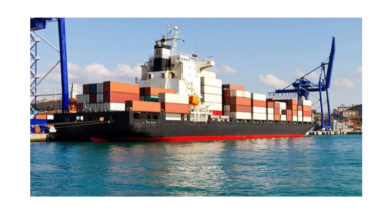Customer education starts with ‘why’ and ‘what’s next’
The large format printing industry in the Middle East is largely driven by the printed signage market for marketing and corporate communications in the form of billboards, vehicle and building wraps, shop signs, and interior branding. Advances in large format printing technology and new applications such as interior decoration, clothing, fashion, and personalisation have opened up new revenue streams for print service providers (PSPs) and opportunities for their business transformation. However, insufficient education, fixed mind-sets, and resistance to change are among the biggest barriers to adoption and investment on wide format printers for new applications.
Traditional marketers and PSPs continue to view signage as printed or fabricated materials with graphics attached to a surface for the purpose of communication. The conversations start and end with prices and square meters of printed material. While they remain caught in a price war, an ew breed of entrepreneurs is looking at signage differently; they have a broader definition of large format printing, and they see it as a new business opportunity in the creative industries. New investment into this business is coming from interior designers, architects, photographers, fit-out contractors, in-house department of companies, and freelancers.
This changing trend in entrepreneurship is instigating transformation in traditional PSP businesses, forcing them to evolve into business solutions providers. But how far have they reached and where do they need to start? Furthermore, in what direction is the industry heading?
Canon Middle East explored these questions recently by organising a roundtable featuring different stakeholders in the large format printing business – the manufacturer, distributor, and customer – to gain new perspectives on how they can unlock the potential of wide format printing and transform their respective businesses. The participants shared the following opinions and insights.
“A qualified partner entrusted with new technology is the catalyst that can drive change”
One of the biggest threats facing the large format printing industry is the price war. Another challenge is that enquiries often come from the purchasing departments, which are not entirely aware of the risks of ordering products that don’t achieve the goals of their marketing departments.In order to overcome these challenges, we go back to the question of why print buyers should come to us when everybody has the same machine and material. The answer is that we share the responsibility for the brand’s image and success and make it our top priority. We prefer talking with brand owners or custodians who have an uncompromising approach to quality and execution of their communication strategy instead of a short cut solution to printing signage at the lowest prices.
 Anybody can invest in a large format printing business and the time is always right. The first question entrepreneurs should ask themselves is why they want to enter this business. Providing end-to-end solutions is about connecting the various business activities of the customer, discussing all the pros and cons of an activity, and reaching a consensus. They should also know what they are printing and why they accept a printing job, along witha thorough understanding of design principles and the ability to visualize the final output.
Anybody can invest in a large format printing business and the time is always right. The first question entrepreneurs should ask themselves is why they want to enter this business. Providing end-to-end solutions is about connecting the various business activities of the customer, discussing all the pros and cons of an activity, and reaching a consensus. They should also know what they are printing and why they accept a printing job, along witha thorough understanding of design principles and the ability to visualize the final output.
We encourage our customers not to limit themselves to a certain way of marketing because they have the opportunity to utilise every space in which customers interact with their brands in order to maximize the return on investment. This could be achieved by choosing a different medium or modifying and adapting the content for various media. When we understand the marketing objectives of our customers by putting ourselves in their shoes, we are able to suggest improvements or changes. That’s when customers realise that they also need something more, and that we can do much more that they thought we could do.
This exercise involving customers provides the opportunity to upsell and cross-sell other products, as well as establish a long-term relationship with them as their trusted partners and advisors. Value-added services are not restricted to marketing alone. They can extend to logistics, IT, or and any other business function. We offer logistics services to customers, particularly retailers, who print and fabricate marketing collateral for seasonal promotions. We coordinate with all parties involved to deliver, install, collect, and store the collateral until they are required again.
Technologyand product innovation alone cannot solve the problems of price war or bad decisions. Change comes with education, and a qualified partner entrusted with new technology and resources can become the catalyst that can drive change.
“Our biggest challenge and responsibility are ensuring that our customers make the right choices”
Wide format printing services provide entry into several industries today, and this business is attracting new kinds of investors. The new type of service provider need not have a printing background. Such investors are not interested in a big infrastructure and they intend to market and sell their products and services online before any other channel. A large number of them are creative individuals who like to exhibit and sell their work, and who see a business opportunity to generate income from their creative passion. The affordability of new machines has made it easier for artists, photographers, and designers to buy their first large format printer and offer new services.
 Educating such new customers is not only about communicating the features of products, but also how to increase their customer base. It is in our interest to see that their businesses expand. When interested buyers approach us to invest in machines, they have specific applications or services in their minds. Our role is to prompt them to ask the question “what else can we do with this machine or service?” So we initiate discussions about how to increase profit margins, enter new markets and acquire new customers by using the same machine. As a result, they begin considering their business expansion.
Educating such new customers is not only about communicating the features of products, but also how to increase their customer base. It is in our interest to see that their businesses expand. When interested buyers approach us to invest in machines, they have specific applications or services in their minds. Our role is to prompt them to ask the question “what else can we do with this machine or service?” So we initiate discussions about how to increase profit margins, enter new markets and acquire new customers by using the same machine. As a result, they begin considering their business expansion.
However, start-up companies with limited capital cannot afford to make a wrong choice. They need to have foresight while investing in a machine, taking into account their future customer base and to what extent can that grow before an upgrade or another machine is required. Our biggest challenge and responsibility are ensuring that they make the right choices, particularly during the first and critical stage of their businesses.
“An educated customer becomes empowered to take the lead and offer better solutions”
 Creative professionals always demand new tools to realise their vision. New large format printing applications attract their attention when they see the possibilities of new markets for their work. The current large format printers have applications not only for signage production. They are widely being adopted in industries such as architecture, interior design, healthcare, retail, and education. As applications grow and printing machines become more versatile, demand will also increase from well-informed customers.
Creative professionals always demand new tools to realise their vision. New large format printing applications attract their attention when they see the possibilities of new markets for their work. The current large format printers have applications not only for signage production. They are widely being adopted in industries such as architecture, interior design, healthcare, retail, and education. As applications grow and printing machines become more versatile, demand will also increase from well-informed customers.
Customer education is a must to create awareness about new applications and unlock the true potential of large format printing. An educated customer becomes empowered to take the lead and offer better solutions. We start this process by understanding our customers and their businesses and providing superior service without losing focus on the commercial viability of our products for their business. That is possible when the customer is guided in the right direction to make the right investment decisions. When customers make the right commercial decisions, it becomes a win-win proposition for all parties involved, from the manufacturer to end-user.
“Our conversation with customers start with their businesses and not Canon’s technology”
As an end-to-end solutions provider, Canon is at the forefront of studying consumer trends and developing products to respond tochangingmarket conditions and user expectations. Today we are as excited about digital signage and augment reality as we are about wide format printing because they complement each other well when employed for an integrated marketing campaign. As a result of the media convergence, everything from brochures and billboards to augmented reality is a market for Canon and its customers.
 Product development at Canon is not about creating the biggest or fastest machines, but in line with the ground reality. A product is useless if it doesn’t have the right people to utilize it well and drive new business. Also, it should take into account the growth potential and limitations of a market.
Product development at Canon is not about creating the biggest or fastest machines, but in line with the ground reality. A product is useless if it doesn’t have the right people to utilize it well and drive new business. Also, it should take into account the growth potential and limitations of a market.
With regard to signage, we develop printers envisioning how they can become a part or solve a problem in communication. Outdoor or indoor advertising doesn’t work in isolation anymore. A printed billboard is connected to an integrated marketing campaign which includes public relations, digital and social media, and their returns are quantified. A machine can be a relatively low investment for a large format printing business. The profits come from value-added services. A photographer could increase his or her profits and gain new customers by investing in a large format machine with finishing options to provide photo books, which is a highly profitable product. Our aim is to put the right tools in the right hands.
Customer education is the tool that enables business growth. We maintain regular communication among customers, distributors, and other partners to share best industry practices and gain feedback for improvement. The conversation always starts with the customers’ businesses and not Canon’s technology, because it’s the outcome that matters.





